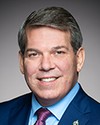Okay, we'll do our best.
In terms of identifying what the priorities will be for establishing the national enforcement projects for any given year, we do an annual call-out, and we speak to our regional staff. That's done through Heather's regional directors. We also speak to our science and technology branch colleagues. We speak to the program managers who are in the protection branch who actually developed the regulations. We collect various perspectives in terms of where we should actually focus our efforts.
Part of that will also be based on the intelligence that we generate within our own organization. We collect a lot of that information, and then there's a bit of a filtering process. We can't do everything that may conceivably come forward, and that's why, as I stated in the opening, there's a certain level of risk-based decision-making that is done in terms of what we can physically undertake. Then we deem where the most important areas of concern are, where the highest degree of non-compliance that we're aware of is, as well as where the largest environmental harm is.
To that effect, basically in terms of any science that informs, that's where we will be looking to our science and technology branch colleagues, who also work with the program in terms of where they develop the regulations. Then, where do we see those regulations requiring some enforcement action?
If it is a newer regulation, or even if it is one that's been on the books for a while, we also work very closely with our colleagues who are separate from us, those responsible for compliance promotion. They work with the risk managers, the developers of the regulations, to do a certain amount of exactly that, compliance promotion. They work with the people who are regulated so they're aware of what their requirements are in order to be in compliance with the regulations as they're developed.
It's always an evergreen process. You see that regulations do get amended based on new information that comes forward and evolves. We work with all of those colleagues to establish what the priorities will be, and then develop the inspection plans. Not all inspection plans have to be delivered equally across the country, depending on the representation of the industrial sectors and the regulated communities.




